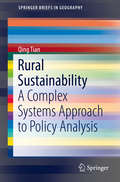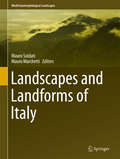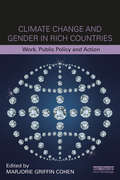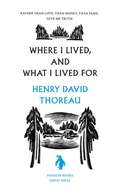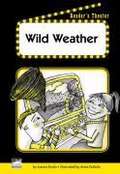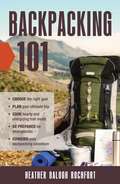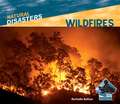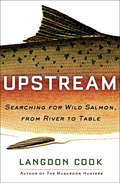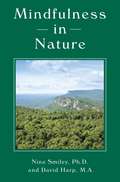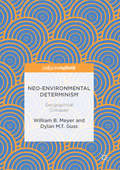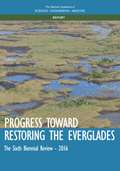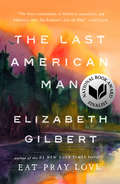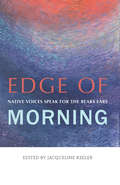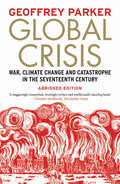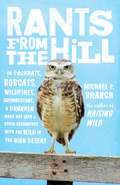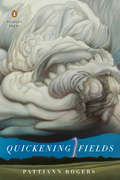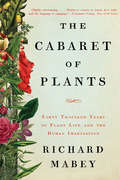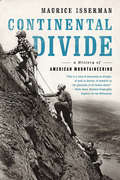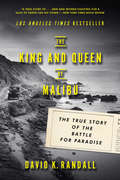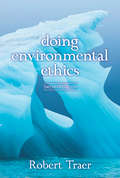- Table View
- List View
Simpler Living, Compassionate Life: A Christian Perspective
by Bill Mckibben Michael SchutEssays on the spiritual power of an uncluttered life from Henri Nouwen, Richard J. Foster, Juliet Schor, and others, with an introduction by Bill McKibben. Every day we are bombarded with messages that imply we need more: more money, more clothes, more food, more cars, more everything. But despite technological advances, proliferation of resources, and a general increase in what the average person has, our happiness has not grown at the same rate as our stash of stuff. Perhaps the key to a good life isn’t found in quantity but in quality—and in a simple, honest approach to existence. In Simpler Compassionate Living, Michael Schut brings together brilliant essays on the topic of modest lifestyles from twenty-three luminaries, including Terry Tempest Williams, Cecile Andrews, Wendell Berry, and Evy McDonald . Delving into topics such as time as a commodity, money in modern society, international economics, social and environmental responsibility, and the ever-widening global community, these compositions present a framework for examining and reforming how we view our place in a world obsessed with commerce and consumerism. With a study guide and an appendix of further resources for those who want to take steps to change their lifestyle, Simpler Compassionate Living is a comprehensive look at how to step outside of the madness of materialism and rediscover the peace and fulfillment within—replacing the fleeting rush of acquisitiveness with a genuinely sustainable joy. Also includes essays by: Shantilal Bhagat, Frederick Buechner, John B. Cobb, Jr., Michael Schut, Alan Durning, James T. Mulligan, William Gibson, Gerald May, Timothy Weiskel, Calvin DeWitt, Duane Elgin, Philip Sherrard, William Stringfellow, Jerome Segal, David Shi
Rural Sustainability
by Qing TianThis volume applies the science of complexity to study coupled human-environment systems (CHES) and integrates ideas from the social sciences of climate change into a study of rural development amid flooding and urbanization in the Poyang Lake Region (PLR) of China. Author Qing Tian operationalizes the concept of sustainability and provides useful scientific analyses for sustainable development in less developed rural areas that are vulnerable to climatic hazards. The book uses a new sustainability framework that is centered on the concept of well-being to study rural development in PLR. The PLR study includes three major analyses: (1) a regional assessment of human well-being; (2) an empirical analysis of rural livelihoods; and (3) an agent-based computer model used to explore future rural development. These analyses provide a meaningful view of human development in the Poyang Lake Region and illustrate some of the complex local- and macro-level processes that shape the livelihoods of rural households in the dynamic process of urbanization. They generate useful insights about how government policy might effectively improve the well-being of rural households and promote sustainable development amid social, economic, and environmental changes. This case study has broader implications. Rural populations in the developing world are disproportionally affected by extreme climate events and climate change. Furthermore, the livelihoods of rural households in the developing world are increasingly under the influences of macro-level forces amid urbanization and globalization. This case study demonstrates that rural development policies must consider broader development dynamics at the national (and even global) level, as well as specific local social and environmental contexts. By treating climate as one of many factors that affect development in such places, we can provide policy recommendations that synergistically promote development and reduce climatic impacts and therefore facilitate mainstreaming climate adaptation into development.
The Land Remembers: The Story of a Farm and Its People
by Ben Logan Curt D. MeineThis beloved American memoir is about a farm and its people, recollections of a boyhood in Wisconsin's Driftless region. Ben Logan grew up on Seldom Seen Farm with his three brothers, father, mother, and hired hand Lyle. The boys discussed and argued and joked over the events around their farm, marked the seasons by the demands of the land, and tested each other and themselves.
Landscapes and Landforms of Italy
by Mauro Soldati Mauro MarchettiThe book deals with the most striking landscapes and landforms of Italy. Attention is given to landform diversity and landscape evolution through time which has been controlled by very diverse geological conditions and dramatic climate changes that have characterized the Italian peninsula and islands since the end of the last glaciation. In addition, various examples of human impact on the landscape are presented. Landscapes and Landforms of Italy contains more than thirty case studies of a multitude of Italian geographical landmarks. The topics and sites described in this book range from the Alpine glaciers to the Etna and Vesuvius volcanoes, taking into account the most representative fluvial, coastal, gravity-induced, karst and structural landscapes of the country. Chapters on the geomorphological landmarks of the cities of Rome and Venice are also included. The book provides the readers with the opportunity to explore the variety of Italian landscapes and landforms through informative texts illustrated with several color maps and photos. This book will be relevant to scientists, scholars and any readers interested in geology, physical geography, geomorphology, landscape tourism, geoheritage and environmental protection.
Climate Change and Gender in Rich Countries: Work, public policy and action
by Marjorie Griffin CohenClimate change is at the forefront of ideas about public policy, the economy and labour issues. However, the gendered dimensions of climate change and the public policy issues associated with it in wealthy nations are much less understood. Climate Change and Gender in Rich Countries covers a wide range of issues dealing with work and working life. The book demonstrates the gendered distinctions in both experiences of climate change and the ways that public policy deals with it. The book draws on case studies from the UK, Sweden, Australia, Canada, Spain and the US to address key issues such as: how gendered distinctions affect the most vulnerable; paid and unpaid work; and activism on climate change. It is argued that including gender as part of the analysis will lead to more equitable and stronger societies as solutions to climate change advance. This volume will be of great relevance to students, scholars, trade unionists and international organisations with an interest in climate change, gender, public policy and environmental studies.
Where I Lived, and What I Lived For (Penguin Books - Great Ideas)
by Henry David ThoreauThoreau's account of his solitary and self-sufficient home in the New England woods remains an inspiration to the environmental movement--a call to his fellow men to abandon their striving, materialistic existences of 'quiet desperation' for a simple life within their means, finding spiritual truth through awareness of the sheer beauty of their surroundings.
One Giant Leap
by Jackie Urbanovic Pam Hirschfeld Katherine FollettPerform this script about a live report from NASA Mission Control as it follows the Apollo moon landing in 1969.
Wild Weather
by Joanna Korba Jeffrey Fuerst Anita DufallaPerform this script about how to change the weather.
Backpacking 101: Choose the Right Gear, Plan Your Ultimate Trip, Cook Hearty and Energizing Trail Meals, Be Prepared for Emergencies, Conquer Your Backpacking Adventures
by Heather Balogh RochfortFrom the creator of the Just a Colorado Gal blog comes a guide to help you plan for a fun backpacking experience.It’s time to take a hike! In Backpacking 101, outdoor expert Heather Balogh Rochfort goes step-by-step through the preparation process of hiking—from selecting the right gear to choosing the perfect destination. She also provides useful information for out on the trail, including how to -Properly read a topographic map -Set up an environmentally friendly campsite -Safely interact with wildlife -Handle being lost in the woods With Backpacking 101 in your bag, you can be prepared for whatever comes your way during your trek—no matter what skill level you are. It’s the perfect resource for anyone ready for an outdoor adventure!
Essays on Sustainability and Management
by Runa Sarkar Annapurna ShawThis book offers a comprehensive overview of sustainability and management in India and through its insightful essays highlights the complex and multifaceted nature of sustainability as a concept. It also demonstrates the debates surrounding the concept of sustainability and its ramifications for ground-level practice in managing organisations and for public policy. The contributions from sustainability enthusiasts, practitioners from disparate fields and academics working at the Indian Institute of Management Calcutta, have been divided into five themes: (1) sustainability as a normative concept; (2) sustainability concept at the global level, (3) sustainability practices in Indian organisations and consumer behaviour; (4) sustainability, corporate governance and corporate social responsibility and (5) sustainability: a critique of organisational practice and government regulation. The themes reflect both new and continuing issues confronting management in the country today. Examples and in-depth studies make it relevant to the grounded reality in India. The expertise and experience of the contributors ensure that readers are left with a grasp of our current understanding of how sustainability is related to society and business, the direction this understanding will take in the future.
Wildfires (Natural Disasters)
by Rochelle BaltzerThe book introduces readers to the basics of wildfires. Readers will learn why they happen, where they occur, and how they affect land. Types of wildfires are also explained, and a simple diagram illustrates the fire triangle. A Case Study chapter discusses the Peshtigo Fire of 1871, while a map aids comprehension. Firefighting and smoke jumpers, damage and cleanup work, safety methods, and preventive measures are also covered.
Upstream: Searching for Wild Salmon, from River to Table
by Langdon CookFrom the award-winning author of The Mushroom Hunters comes the story of an iconic fish, perhaps the last great wild food: salmon. For some, a salmon evokes the distant wild, thrashing in the jaws of a hungry grizzly bear on TV. For others, it’s the catch of the day on a restaurant menu, or a deep red fillet at the market. For others still, it’s the jolt of adrenaline on a successful fishing trip. Our fascination with these superlative fish is as old as humanity itself. Long a source of sustenance among native peoples, salmon is now more popular than ever. Fish hatcheries and farms serve modern appetites with a domesticated “product”—while wild runs of salmon dwindle across the globe. How has this once-abundant resource reached this point, and what can we do to safeguard wild populations for future generations? Langdon Cook goes in search of the salmon in Upstream, his timely and in-depth look at how these beloved fish have nourished humankind through the ages and why their destiny is so closely tied to our own. Cook journeys up and down salmon country, from the glacial rivers of Alaska to the rainforests of the Pacific Northwest to California’s drought-stricken Central Valley and a wealth of places in between. Reporting from remote coastlines and busy city streets, he follows today’s commercial pipeline from fisherman’s net to corporate seafood vendor to boutique marketplace. At stake is nothing less than an ancient livelihood. But salmon are more than food. They are game fish, wildlife spectacle, sacred totem, and inspiration—and their fate is largely in our hands. Cook introduces us to tribal fishermen handing down an age-old tradition, sport anglers seeking adventure and a renewed connection to the wild, and scientists and activists working tirelessly to restore salmon runs. In sharing their stories, Cook covers all sides of the debate: the legacy of overfishing and industrial development; the conflicts between fishermen, environmentalists, and Native Americans; the modern proliferation of fish hatcheries and farms; and the longstanding battle lines of science versus politics, wilderness versus civilization. This firsthand account—reminiscent of the work of John McPhee and Mark Kurlansky—is filled with the keen insights and observations of the best narrative writing. Cook offers an absorbing portrait of a remarkable fish and the many obstacles it faces, while taking readers on a fast-paced fishing trip through salmon country. Upstream is an essential look at the intersection of man, food, and nature.Praise for Upstream“Passionate . . . Cook deftly conveys his love of nature, the beauty of the Pacific Northwest, and the delectable eating provided by fresh caught wild salmon.”—Library Journal “Insightful . . . this work is a great place to learn what needs to done—and an entertaining view on the positive and negative connections humans have with the natural environment.”—Publishers Weekly“Langdon Cook delivers a beautifully written portrait of the iconic salmon that blends history, biology, contentious politics, and the joy of fishing into a captivating and thought-provoking tale.”—Eric Jay Dolin, author of Brilliant Beacons“Salmon are the essence of the Pacific Northwest, and as Langdon Cook shows so powerfully, they are the key to its future."—Rowan Jacobsen, author of The Essential Oyster“In this fresh tale of an ancient wonder, Langdon Cook takes us on an inspired journey of discovery through the heart and soul of salmon country.”—David R. Montgomery, author of King of Fish and Growing a Revolution
Mindfulness in Nature
by David Harp Nina SmileyMindfulness in Nature helps readers separate themselves from their busy lives, and allows them to engage in a deeper, more fulfilling relationship with the natural world around them through meditative practice.Now more than ever, with the constant distractions that abound in modern life—from smart phones to social media—it is imperative we seek the solace and comfort of nature for our well-being. The Japanese have a term for it: Shinrin-yoku or "Forest Bathing". Mindfulness experts Dr. Nina Smiley and David Harp have created a new guide called Mindfulness in Nature which provides a meaningful way to nurture ourselves through a sense of spaciousness, calm, and connection with the out-of-doors.Penned from the breathtaking natural setting of Mohonk Mountain House in New Paltz, New York, Mindfulness in Nature affords readers access to wisdom from dozens of notable authors, philosophers and poets – including Henry David Thoreau, Emily Dickinson, and Walt Whitman – on the important themes of nature, spirituality, simple beauty and joyful living. More than just a walk in the woods, Mindfulness in Nature is a carefully crafted and deliberate approach to achieve better health and well-being and is ideal for all ages.
Neo-Environmental Determinism
by William B. Meyer Dylan M.T. GussThis book pulls together major critiques of contemporary attempts to explain nature-society relations in an environmentally deterministic way. After defining key terms, it reviews the history of environmental determinism's rise and fall within geography in the early twentieth century. It discusses the key reasons for the doctrine's rejection and presents alternative, non-deterministic frameworks developed within geography for analyzing the roles played by the environment in human affairs. The authors examine the rise in recent decades of neo-deterministic approaches to such issues as the demarcation of regions, the causes of civilizational collapse in prehistory, today's globally uneven patterns of human well-being, and the consequences of human-induced climate change. In each case, the authors draw on the insights and approaches of geography, the academic discipline most conversant with the interactions of society and environment, to challenge the widespread acceptance that such approaches have won. The book will appeal to those working on human-environmental research, international development and global policy initiatives.
Progress Toward Restoring the Everglades: The Sixth Biennial Review - 2016
by Engineering Medicine National Academies of SciencesThe Everglades ecosystem is vast, stretching more than 200 miles from Orlando to Florida Bay, and Everglades National Park is but a part located at the southern end. During the 19th and 20th centuries, the historical Everglades has been reduced to half of its original size, and what remains is not the pristine ecosystem many image it to be, but one that has been highly engineered and otherwise heavily influenced, and is intensely managed by humans. Rather than slowly flowing southward in a broad river of grass, water moves through a maze of canals, levees, pump stations, and hydraulic control structures, and a substantial fraction is diverted from the natural system to meet water supply and flood control needs. The water that remains is polluted by phosphorus and other contaminants originating from agriculture and other human activities. Many components of the natural system are highly degraded and continue to degrade. Progress Toward Restoring the Everglades is the sixth biennial review of progress made in meeting the goals of the Comprehensive Everglades Restoration Plan (CERP). This complex, multibillion-dollar project to protect and restore the remaining Everglades has a 30-40 year timeline. This report assesses progress made in the various separate project components and discusses specific scientific and engineering issues that may impact further progress. According to Progress Toward Restoring the Everglades, a dedicated source of funding could provide ongoing long-term system-wide monitoring and assessment that is critical to meeting restoration objectives. This report examines the implications of knowledge gained and changes in widely accepted scientific understanding regarding pre-drainage hydrology, climate change, and the feasibility of water storage since the CERP was developed.
The Last American Man
by Elizabeth Gilbert<P>In this rousing examination of contemporary American male identity, acclaimed author and journalist Elizabeth Gilbert explores the fascinating true story of Eustace Conway. <P>In 1977, at the age of seventeen, Conway left his family's comfortable suburban home to move to the Appalachian Mountains. <P>For more than two decades he has lived there, making fire with sticks, wearing skins from animals he has trapped, and trying to convince Americans to give up their materialistic lifestyles and return with him back to nature. <P>To Gilbert, Conway's mythical character challenges all our assumptions about what it is to be a modern man in America; he is a symbol of much we feel how our men should be, but rarely are. <P><b>Finalist for the National Book Award 2002</b>
Edge of Morning: Native Voices Speak for the Bears Ears
by Jacqueline KeelerIn support of tribal efforts to protect the Bears Ears, Native writers bear testimony to the fragile and essential nature of this sacred landscape in America’s remote red rock country. Through poem and essay, these often-ignored voices explore the ways many native people derive tradition, sustenance, and cultural history from the Bears Ears.
Global Crisis: War, Climate Change and Catastrophe in the Seventeenth Century - Abridged Ed.
by Geoffrey ParkerAn accessible synthesis of the prescient best seller exploring seventeenth-century catastrophe and the impact of climate change First published in 2013, Geoffrey Parker’s prize-winning best seller Global Crisis analyzes the unprecedented calamities—revolutions, droughts, famines, invasions, wars, and regicides—that befell the mid-seventeenth-century world and wiped out as much as one-third of the global population, and reveals climate change to be the root cause. Examining firsthand accounts of the crises and scrutinizing the prevailing weather patterns during the 1640s and 1650s—longer and harsher winters, and cooler and wetter summers—Parker reveals evidence of disrupted growing seasons causing malnutrition, disease, a higher death toll, and fewer births. This new abridged edition distills the original book’s prodigious research for a broader audience while retaining and indeed emphasizing Parker’s extraordinary historical achievement: his dazzling demonstration of the link between climate change and worldwide catastrophe 350 years ago. Yet, the contemporary implications of his study are equally important: are we prepared today for the catastrophes that climate change could bring tomorrow? At half the original length, this user-friendly abridgment is ideal for students and general readers seeking a rapid handle on the key issues.
Rants from the Hill: On Packrats, Bobcats, Wildfires, Curmudgeons, a Drunken Mary Kay Lady, and Other Encounters with the Wild in the High Desert
by Michael P. Branch“If Thoreau drank more whiskey and lived in the desert, he’d write like this.”—High Country News Welcome to the land of wildfire, hypothermia, desiccation, and rattlers. The stark and inhospitable high-elevation landscape of Nevada’s Great Basin Desert may not be an obvious (or easy) place to settle down, but for self-professed desert rat Michael Branch, it’s home. Of course, living in such an unforgiving landscape gives one many things to rant about. Fortunately for us, Branch—humorist, environmentalist, and author of Raising Wild—is a prodigious ranter. From bees hiving in the walls of his house to owls trying to eat his daughters’ cat—not to mention his eccentric neighbors—adventure, humor, and irreverence abound on Branch’s small slice of the world, which he lovingly calls Ranting Hill.
Quickening Fields
by Pattiann RogersA new collection by an award-winning poet who “presents her apprehensions of the natural world with striking accuracy and emotional impact” (Orion Magazine)Denise Levertov has called Pattiann Rogers a “visionary of reality, perceiving the material world with such intensity of response that impulse, intention, meaning, interconnections beyond the skin of appearance are revealed.” Quickening Fields gathers fifty-three poems that focus on the wide variety of life forms present on earth and their unceasing zeal to exist, their constant “push against the beyond” and the human experience among these lives. Whether a glassy filament of flying insect, a spiny spider crab, a swath of switch grass, barking short-eared owls, screeching coyotes, or racing rat-tailed sperm, all are testifying to their complete devotion to being. Many of the poems also address celestial phenomena, the vision of the earth immersed in a dynamic cosmic milieu and the effects of this vision on the human spirit. While primarily lyrical and celebratory in tone, these poems acknowledge, as well, the terror, suffering, and unpredictability of the human condition.
Almost Complete Poems
by Stanley MossMoss is oceanic: his poems rise, crest, crash, and rise again like waves. His voice echoes the boom of the Old Testament, the fluty trill of Greek mythology, and the gongs of Chinese rituals as he writes about love, nature, war, oppression, and the miracle of language. He addresses the God of the Jews, of the Christians, and of the Muslims with awe and familiarity, and chants to lesser gods of his own invention. In every surprising poem, every song to life, beautiful life, Moss, by turns giddy and sorrowful, expresses a sacred sensuality and an earthy holiness. Or putting it another way: here is a mind operating in open air, unimpeded by fashion or forced thematic focus, profoundly catholic in perspective, at once accessible and erudite, inevitably compelling. All of which is to recommend Moss's ability to participate in and control thoroughly these poems while resisting the impulse to center himself in them. This differentiates his beautiful work from much contemporary breast-beating. Moss is an artist who embraces the possibilities of exultation, appreciation, reconciliation, of extreme tenderness. As such he lays down a commitment to a common, worldly morality toward which all beings gravitate.
The Cabaret of Plants: Forty Thousand Years of Plant Life and the Human Imagination
by Richard Mabey"Highly entertaining…Without being sentimental about it, Mr. Mabey gets us to look at life from the plants' point of view. His science is sound, he's witty, and his language is engaging." —Constance Casey, New York Times The Cabaret of Plants is a masterful, globe-trotting exploration of the relationship between humans and the kingdom of plants by the renowned naturalist Richard Mabey. A rich, sweeping, and wonderfully readable work of botanical history, The Cabaret of Plants explores dozens of plant species that for millennia have challenged our imaginations, awoken our wonder, and upturned our ideas about history, science, beauty, and belief. Going back to the beginnings of human history, Mabey shows how flowers, trees, and plants have been central to human experience not just as sources of food and medicine but as objects of worship, actors in creation myths, and symbols of war and peace, life and death. Writing in a celebrated style that the Economist calls “delightful and casually learned,” Mabey takes readers from the Himalayas to Madagascar to the Amazon to our own backyards. He ranges through the work of writers, artists, and scientists such as da Vinci, Keats, Darwin, and van Gogh and across nearly 40,000 years of human history: Ice Age images of plant life in ancient cave art and the earliest representations of the Garden of Eden; Newton’s apple and gravity, Priestley’s sprig of mint and photosynthesis, and Wordsworth’s daffodils; the history of cultivated plants such as maize, ginseng, and cotton; and the ways the sturdy oak became the symbol of British nationhood and the giant sequoia came to epitomize the spirit of America. Complemented by dozens of full-color illustrations, The Cabaret of Plants is the magnum opus of a great naturalist and an extraordinary exploration of the deeply interwined history of humans and the natural world.
Continental Divide: A History of American Mountaineering
by Maurice IssermanThis magesterial and thrilling history argues that the story of American mountaineering is the story of America itself. In Continental Divide, Maurice Isserman tells the history of American mountaineering through four centuries of landmark climbs and first ascents. Mountains were originally seen as obstacles to civilization; over time they came to be viewed as places of redemption and renewal. The White Mountains stirred the transcendentalists; the Rockies and Sierras pulled explorers westward toward Manifest Destiny; Yosemite inspired the early environmental conservationists. Climbing began in North America as a pursuit for lone eccentrics but grew to become a mass-participation sport. Beginning with Darby Field in 1642, the first person to climb a mountain in North America, Isserman describes the exploration and first ascents of the major American mountain ranges, from the Appalachians to Alaska. He also profiles the most important American mountaineers, including such figures as John C. Frémont, John Muir, Annie Peck, Bradford Washburn, Charlie Houston, and Bob Bates, relating their exploits both at home and abroad. Isserman traces the evolving social, cultural, and political roles mountains played in shaping the country. He describes how American mountaineers forged a "brotherhood of the rope," modeled on America's unique democratic self-image that characterized climbing in the years leading up to and immediately following World War II. And he underscores the impact of the postwar "rucksack revolution," including the advances in technique and style made by pioneering "dirtbag" rock climbers. A magnificent, deeply researched history, Continental Divide tells a story of adventure and aspiration in the high peaks that makes a vivid case for the importance of mountains to American national identity.
The King and Queen of Malibu: The True Story of the Battle for Paradise
by David K. RandallNew York Times best-selling author David K. Randall spins a remarkable tale of the American West and the desire of one couple to preserve paradise. Frederick and May Rindge, the unlikely couple whose love story propelled Malibu's transformation from an untamed ranch in the middle of nowhere to a paradise seeded with movie stars, are at the heart of this story of American grit and determinism. He was a Harvard-trained confidant of presidents; she was a poor Midwestern farmer's daughter raised to be suspicious of the seasons. Yet the bond between them would shape history. The newly married couple reached Los Angeles in 1887 when it was still a frontier, and within a few years Frederick, the only heir to an immense Boston fortune, became one of the wealthiest men in the state. After his sudden death in 1905, May spent the next thirty years fighting off some of the most powerful men in the country--as well as fissures within her own family--to preserve Malibu as her private kingdom. Her struggle, one of the longest over land in California history, would culminate in a landmark Supreme Court decision and lead to the creation of the Pacific Coast Highway. The King and Queen of Malibu traces the path of one family as the country around them swept off the last vestiges of the Civil War and moved into what we would recognize as the modern age. The story of Malibu ranges from the halls of Harvard to the Old West in New Mexico to the beginnings of San Francisco's counter culture amid the Gilded Age, and culminates in the glamour of early Hollywood--all during the brief sliver of history in which the advent of railroads and the automobile traversed a beckoning American frontier and anything seemed possible.
Doing Environmental Ethics (Second Edition)
by Robert TraerDoing Environmental Ethics faces our ecological crisis by drawing on environmental science, economic theory, international law, and religious teachings, as well as philosophical arguments. It engages students in constructing ethical presumptions based on arguments for duty, character, relationships, and rights, and then tests these moral presumptions by predicting the likely consequences of acting on them. Students apply what they learn to policy issues discussed in the final part of the book: sustainable consumption, environmental policy, clean air and water, agriculture, managing public lands, urban ecology, and climate change. Questions after each chapter and a worksheet aid readers in deciding how to live more responsibly. The second edition has been updated to reflect the latest developments in environmental ethics, including sustainable practices of corporations, environmental NGO actions, and rainforest certification programs. This edition also gives greater emphasis to environmental justice, Rawls, and ecofeminism. Revised study questions concern application and analysis, and new "Decisions" inserts invite students to analyze current environmental issues.

